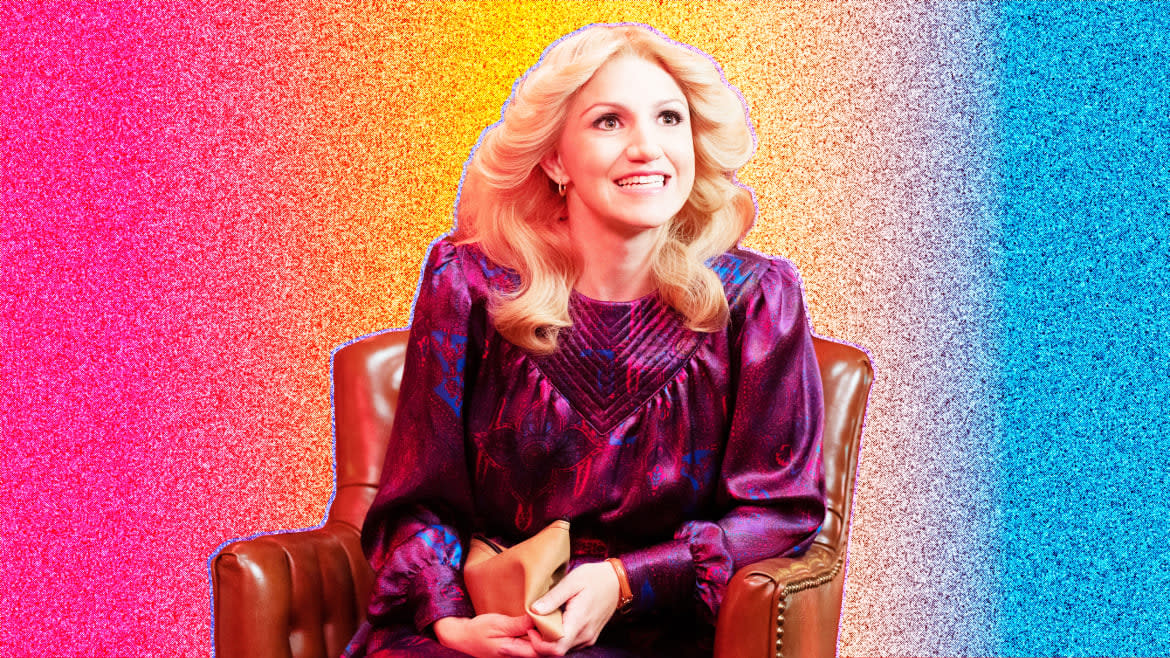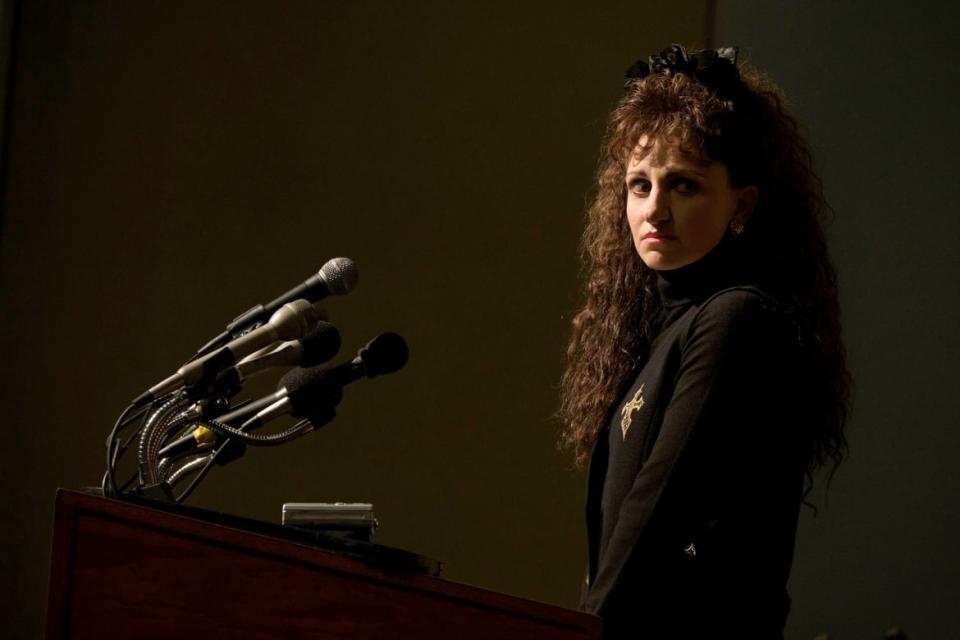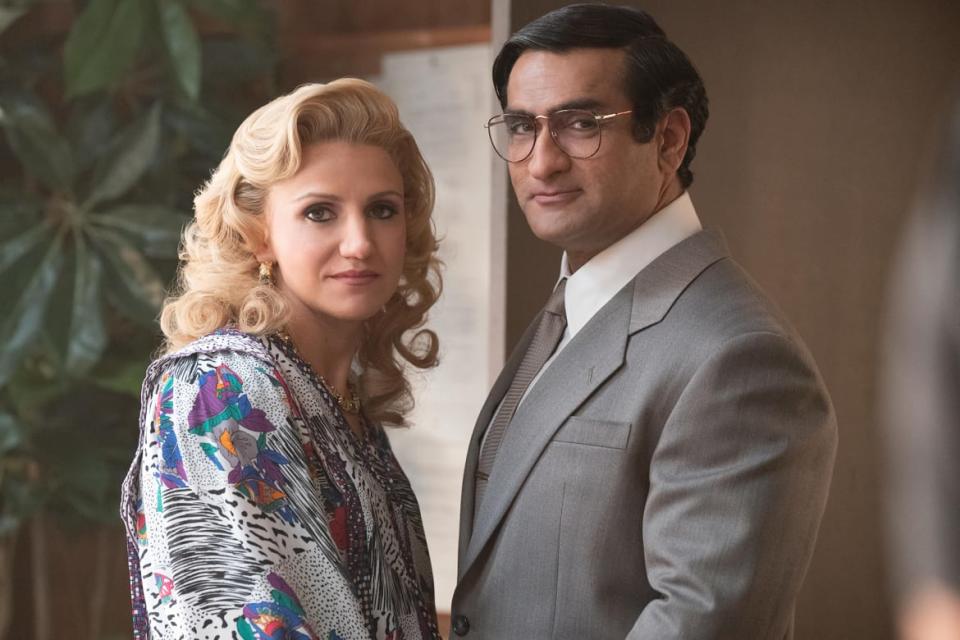‘Welcome to Chippendales’ Star Annaleigh Ashford Thanks God for Male Strippers

- Oops!Something went wrong.Please try again later.
- Oops!Something went wrong.Please try again later.
- Oops!Something went wrong.Please try again later.
- Oops!Something went wrong.Please try again later.
Annaleigh Ashford did her first years in New York City better than the rest of us.
The actress is now, perhaps, indelibly “New York.” She’s a Broadway star, who made her debut in Wicked as Glinda, won a Tony Award for her performance in You Can’t Take It With You, and, next year, will be baking, let’s say, “special” pies while singing Sondheim in the upcoming revival of Sweeney Todd with Josh Groban. On screen, she’s known for her work in shows like Masters of Sex, B Positive, and Impeachment: American Crime Story, in which she played Bill Clinton accuser Paula Jones. Her new series, Welcome to Chippendales, is currently streaming on Hulu, with new episodes every Tuesday.
But before she was leading her own Chuck Lorre sitcom on CBS or playing one of modern history’s most gossiped-about women in a Ryan Murphy production, Ashford was a go-go dancer for the DJ Lady Starlight. Back then, she went by the name Hollywood Starr. “With two r’s,” she says. “Ew.”
It’s surprising information to learn about the actress, whose perkiness and radiant wholesomeness has been the secret to her complicated—and irresistibly humorous—performances. (Again: Glinda!) But it was 2004; Ashford had moved to the city to attend college at Marymount Manhattan College, and she found an unusual, though ultimately fitting, place in the Lower East Side club scene.

Her big gig was Lady Starlight’s “English Disco” party. Ashford would wear elaborate ’70s-inspired outfits and huge platform shoes. “I also dyed my eyebrows white before anybody did that,” she tells The Daily Beast’s Obsessed. “I was doing it 20 years ago, thank you.”
It was a time when the music and the art world collided with the club scene. For her, it was an outlet for creative expression before her acting career took off. The inspiration for her look and performance was Cyrinda Foxe, the wife of New York Dolls singer David Johansen, with a tinge of David Bowie thrown in there. “I mean, this was before the days of Instagram, but, oh my god, my Instagram would have been very fabulous.”
Ashford never did drugs or drank while she was dancing, save for the gin and tonic she’d have at 3 a.m. before going out with her friend, Anna Copa Cabanna, who still performs in New York today. “But people would always ask me where the cocaine was!” Ashford says, a testament to her effervescent energy and tendency to talk very (very) fast. “I love that people would ask me where the blow was. I’d be like, ‘I don't know. Ask somebody over there. I don't have it.’ But the fact that people thought I was on cocaine is so exciting to me.”
The cocaine of it all, believe it or not, is highly relevant.
‘Welcome to Chippendales’ Star Murray Bartlett Is Too Embarrassed to Strip for You
In Welcome to Chippendales, Ashford plays Irene, the wife of Somen “Steve” Banerjee (Kumail Nanjiani), the Indian immigrant who became the unlikely founder of the Chippendales empire of male strippers in the late ’70s and early ’80s. It’s the story of how an American dream can sour from inspirational to the dark side of ambition.
The series also recontextualizes the pop-culture joke of a troupe of male dancers in bowties, cuffs, and breakaway pants, performing cheesy routines at trashy clubs. Instead, it spotlights how renegade and empowering the group’s rise was. Sure, we all remember the Patrick Swayze and Chris Farley Saturday Night Live sketch. But we forget that the popularity of the Chippendales was a gender victory, the breaking of sexist and misogynistic taboos. The Chippendales offered a safe space for women to indulge in and normalize their own desire and sexual expression.
Irene’s story and relationship to both Steve and the business, especially as imbued with Ashford’s performance, is at the center of that.

“I always thought that it was uncomfortable that men were running a business that was catering to women,” Ashford says of her original thoughts of the Chippendales enterprise. “It was a happy accident, from a business perspective, that it actually fed this niche market of women getting to behave the way that men have for centuries. Men have been going to rooms with women dancing for them since the beginning of time. I feel like it took until 1978 for the tables to be turned. Well, God bless Chippendales, if that's the way it is.”
Irene was an accountant when she met Steve at the then-new Chippendales club, where women were having a raucous time swilling drinks and cheering at the dancers to take it off. She noticed that the bartenders were wasting money by not using the proper ice scoopers to fill glasses to the brim, thereby using too much alcohol in each pour. She tracked down Steve to explain this all to him—a lesson in math that, on-screen, the two perform with all the horniness of a sex scene.
“I always say that their love language was numbers,” Ashford says. “They had a shared dream of being a part of the Hollywood scene and the only way in was through business for them. That was how they could find a window into the glamor of what they had dreamed. As a woman at that moment, the only way that Irene could find a way into business would be through a man.”
As the club grew, Irene became the accountant and business manager, as well as Steve’s wife. Their financial success exposed them to new lifestyles. Steve became preoccupied with status, modeling himself after his idol, Hugh Hefner. Irene, meanwhile, became intoxicated by the free spirit of the world that the club and its frequenters opened her up to. Which is to say, cocaine played a pivotal part in their respective evolutions. (I told you it’d be relevant.)
The ‘Welcome to Chippendales’ Secret to Making Pants for Male Strippers to Take Off
In a recent episode of the series, Steve is out of town. Nick (the Chippendales choreographer played by Murray Bartlett) and Denise (the costume designer portrayed by Juliette Lewis) convince Irene to go dancing with them. They observe as she does lines of cocaine for the first time and becomes enthralled with a party atmosphere she’d never experienced. She blossoms—and getting high is a major catalyst for that. When Steve returns, the drug becomes a part of their wealthy Hollywood fantasy.
“The way that cocaine is used in both of their stories, I think it was delightful,” Ashford says. “It was a time when cocaine was something that was just part of the everyday journey. Irene says at one point, ‘It's what rich people do, so we're supposed to do it.’”
One of the most common questions the cast of Welcome to Chippendales has gotten since the show premiered is whether or not they had ever seen an erotic dance show like the famous group’s before. Ashford giggles sheepishly when asked. “I want to be like, ‘No! I haven’t! The first time I did was on the show!’”
But in those aforementioned early years in New York, Ashford visited the Gaiety Male Burlesque. The theater operated in Times Square for three decades, becoming famous when its dancers were featured in Madonna’s Sex book. (The club closed its doors in 2005.) “I went when I was in college!” Ashford says. “I feel like it was a rite of passage.”
She was shocked by how accurately the series’ set, an environment that can ordinarily be clinical and technical, recreated the thrilling, borderline feral mood of a show like the one she saw.
“They would tell us all to be quiet, but every time the boys took off their pants, all of us, me included, couldn't help but gasp,” she says, demonstrating her startled, excited squeal. “I don’t know. The air in the room just changed, like it does at church.”
That visceral nature is what attracted her to the show. It is a story about erotic male dancers, but it’s way more than that. It’s a time capsule of that moment in American culture. It reveals how women were treated and men revered at that time. And it is a startling true-crime story that takes several upsetting turns. (Some people, like Ashford’s Dateline-obsessed mother, are already very familiar with that.)
“There's more than meets the eye to this show,” Ashford says, before she starts giggling again: “There's a lot going on under those pants.”
Get the Daily Beast's biggest scoops and scandals delivered right to your inbox. Sign up now.
Stay informed and gain unlimited access to the Daily Beast's unmatched reporting. Subscribe now.

